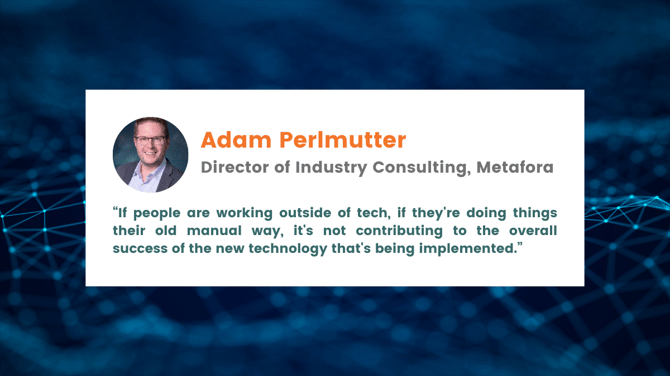In the ever-evolving landscape of logistics, the integration of cutting-edge technology presents both opportunities and challenges. On Tuesday, August 15th, an insightful webinar hosted by Optimal Dynamics delved into the realm of Change Management and Adoption of Logistics Technology, featuring industry experts who shared their perspectives, experiences, and strategies.
The webinar, hosted by Trey Griggs, Founder and CEO of Beta Consulting Group, brought together a panel of distinguished speakers:
- Adam Perlmutter, Director of Industry Consulting at Metafora
- Daniel Powell, CEO of Optimal Dynamics
- Eric Johnson, Senior Logistics Technology Editor at Journal Of Commerce
This dynamic panel tackled the world of digital logistics and change management with insights into tech strategies, real-world success stories, and future trends in logistics tech.
Watch the full Webinar here:
Navigating the Change Landscape
One of the overarching themes explored was the challenge of transitioning from manual processes to technology-driven solutions. The experts emphasized that the allure of Artificial Intelligence (AI) is undeniable, with the potential to bring about dramatic gains when implemented effectively. However, the landscape of change management is not new; organizations in the logistics industry have grappled with it for quite some time.
It is important that organizations, regardless of size, should proactively engage in conversations about the reasons behind technological investments and how they align with the future organizational structure.
Things you should consider when implementing new technologies:
- Having future state and current state roles mapped out properly.
- Make sure that you have the right KPIs in place to ensure the success of these individuals and what they're incentivized to do.
- Taking into consideration how it will impact the broader business.
“If people are working outside of tech, if they're doing things their old manual way, it's not contributing to the overall success of the new technology that's being implemented.” -Adam Perlmutter

Challenges
Only three out of every ten change management processes are successful, while the rest encounter obstacles. The root cause of this discrepancy is often the lack of adoption among employees. Leadership decisions to invest in new technologies are sometimes not effectively communicated to the wider team. This lack of understanding can lead to hesitancy, skepticism, and mistrust of technology. They fear they can be replaced on what technology brings.
Expert Insights and Advice for Transformation
To combat these challenges, the panel of experts provided valuable insights and actionable advice for leaders navigating change:
- Align with the Team: Ensuring executive support is crucial to the success of technology implementation.
- Deliver Clear Messages: Transparency and clarity in communication help employees understand the reasons behind change.
- Balancing Costs and Capacity: Leaders must explore ways to optimize existing resources while integrating new technology.
“The success of technology implementation lies in effectively communicating the why behind the change to employees.” - Ryan Schreiber
The Journey: Preparation, Management, and Reinforcement
Adam Perlmutter emphasized it is important to consider the changes company-wide and how it's gonna impact your entire business. He strongly recommends breaking it down into different components of the journey: preparing for the change, managing through the change, and reinforcing the change.
- Preparation for the change: Communicate the benefits of change to end-users, emphasizing “what’s in it for me.”
- Management through the change: Empathy is key during the transition phase. Employees’ roles, processes, and responsibilities are evolving, so explaining the “why” behind changes is crucial.
- Reinforcement the change: Upskilling employees by introducing new tools and technologies not only benefits the business but also enhances their professional journey.
AI’s Transformational Potential
- Load acceptance, load allocation, and dispatch automation take a lot of time to do it manually.
- The power of data-driven decision-making was emphasized as it removes emotional bias, enabling better relationships with drivers, customers, and stakeholders.
- Differentiator: Data insights to be a better partner with your customers.
- Change management is going to occur more rapidly- With the speed of technological evolution ever-increasing, embracing change and staying adaptable is key to sustained success.




